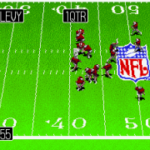The dark and twisted world of Tokyo Ghoul has captivated manga readers with its gripping storyline, complex characters, and haunting imagery. At the heart of this psychological horror series lies a powerful symbol – the mask. Used by both ghouls and investigators, masks play a crucial role in Tokyo Ghoul Manga narrative and themes. Let’s dive deep into the significance of mask symbolism and how it enhances the storytelling in this beloved manga.
The Dual Nature of Masks
In Tokyo Ghoul, masks serve a dual purpose for the characters who wear them. On a practical level, they conceal the wearer’s identity, allowing ghouls to hunt and feed without being identified. But on a deeper symbolic level, masks represent the duality of human nature and the struggle between one’s true self and the persona presented to the world.
For protagonist Ken Kaneki, his mask becomes a physical manifestation of his internal conflict as he grapples with his human side and his new ghoul nature. The mask allows him to compartmentalize these warring aspects of himself, quite literally putting on a different face when he needs to embrace his ghoul abilities.
Masks as a Reflection of Identity
One of the most fascinating aspects of mask symbolism in Tokyo Ghoul is how each character’s mask reflects their personality and inner turmoil. The designs are far from arbitrary – they provide insight into the wearer’s psyche and backstory.
Kaneki’s Eyepatch Mask
Kaneki’s iconic eyepatch mask with a ghoulish grin is deeply symbolic. The eyepatch represents his human side and the eye he lost, while the monstrous mouth reflects his ghoul nature. This duality in the mask design perfectly encapsulates Kaneki’s struggle to reconcile his human and ghoul halves.
Uta’s Artistic Masks
As the mask maker for many ghouls, Uta’s creations offer a window into each character’s soul. His ability to craft masks that resonate with the wearer’s true nature highlights the theme of hidden identities throughout the manga.
The Psychological Impact of Wearing Masks
Beyond their symbolic significance, the act of wearing masks has a profound psychological effect on the characters in Tokyo Ghoul. For many ghouls, donning a mask allows them to embrace a different side of themselves – often a more violent or primal nature that they keep hidden in everyday life.
This concept of masks enabling a form of psychological transformation is not unique to Tokyo Ghoul. It draws on real-world cultural and psychological phenomena, where masks have long been used in rituals, performances, and social interactions to allow individuals to adopt different personas or tap into hidden aspects of themselves.
Masks as a Tool for Survival
In the dangerous world of Tokyo Ghoul, masks are not just symbolic – they are often a matter of life and death. For ghouls living in a society that hunts them, the ability to conceal their identity is crucial for survival. This practical aspect of mask-wearing adds another layer to their significance in the manga.
The CCG investigators also utilize masks, though for different reasons. Their masks serve as protective gear, shielding them from the toxic miasma released by certain ghoul abilities. This parallel use of masks by both ghouls and humans further blurs the lines between the two groups, highlighting the manga’s themes of moral ambiguity and the thin line between monster and human.
Evolution of Mask Designs
As the story progresses, we see an evolution in mask designs that mirrors the characters’ growth and changing circumstances. This is particularly evident in Kaneki’s masks, which change as he undergoes significant transformations in his identity and allegiances.
Cultural Influences on Mask Symbolism
The use of masks in Tokyo Ghoul draws inspiration from various cultural sources, adding depth to the symbolism. Japanese Noh theater masks, which are used to represent different characters and emotions, likely influenced the concept of ghouls using masks to adopt different personas.
Additionally, the manga taps into the universal fascination with masks across cultures. From ancient rituals to modern-day masquerade balls, masks have long been associated with transformation, hidden identities, and the revelation of one’s true nature – all themes that are central to tokyoghoul.top narrative.
Masks and the Manga’s Core Themes
The mask symbolism in Tokyo Ghoul is intricately tied to the manga’s core themes of identity, duality, and the nature of humanity. Through the use of masks, creator Sui Ishida explores questions of what it means to be human, the masks we all wear in society, and the struggle between our true selves and the faces we present to the world.
This exploration resonates deeply with readers, particularly young adults who often grapple with questions of identity and belonging. The mask symbolism provides a tangible metaphor for these complex emotional and psychological concepts, making them more accessible and relatable to the audience.
Impact on Manga and Pop Culture
The striking visual imagery of the masks in Tokyo Ghoul has had a significant impact on manga and pop culture. The designs have inspired countless fan art creations, cosplays, and merchandise. The popularity of these masks extends beyond the manga fandom, with some designs becoming recognizable icons in their own right.
This impact speaks to the power of visual symbolism in manga storytelling. By creating memorable and meaningful designs, Ishida has not only enhanced the narrative of Tokyo Ghoul but also created lasting imagery that resonates with readers long after they’ve finished the manga.
Conclusion
The mask symbolism in Tokyo Ghoul is a masterful example of how visual metaphors can enhance storytelling in manga. By imbuing these masks with deep psychological and narrative significance, Sui Ishida has created a rich symbolic language that adds layers of meaning to the already complex world of Tokyo Ghoul.
For manga fans, the masks of Tokyo Ghoul offer a fascinating study in character design, symbolism, and the power of visual storytelling. They serve as a reminder of the depth and complexity that manga as a medium can achieve, blending art and narrative to create truly unforgettable stories.
We’d love to hear from you – how has the mask symbolism in Tokyo Ghoul impacted your reading experience? Share your thoughts and interpretations in the comments below!


































